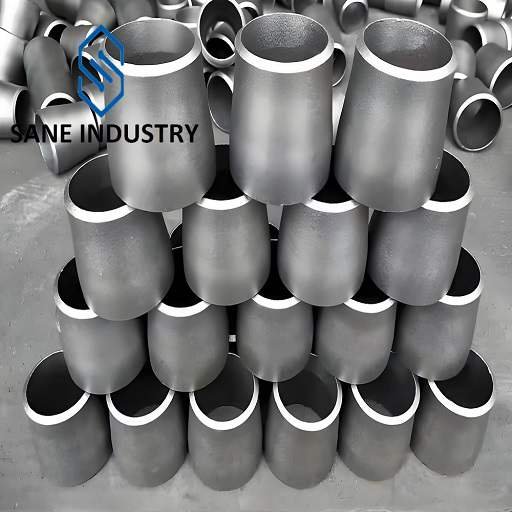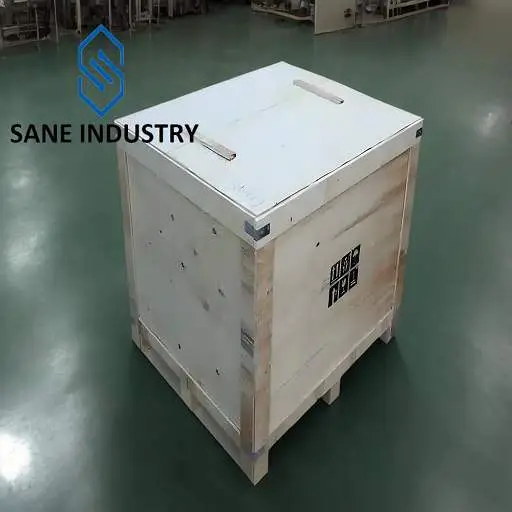What is a Pipe Reducer
A pipe reducer is a specialized fitting used in piping systems to connect two pipes of different diameters. It ensures a smooth transition between sections of varying sizes, maintaining flow efficiency and structural integrity. Pipe reducers are essential in applications where changes in pipe diameter are required to accommodate flow rate adjustments, pressure management, or space constraints.
What are the types of Pipe Reducers
Based on construction geometry: concentric reducers, eccentric reducers
Based on end connections: butt welded reducers, socket welded reducers, threaded reducers, flanged reducers
Based on material: carbon steel reducers, stainless steel reducers, duplex steel reducers, copper reducers, etc.
What are the advantages of Pipe Reducers
Flow Optimization
Smoothly adjust pipe diameter to regulate flow velocity, pressure, or turbulence for efficient system performance.Material Savings
Eliminate the need for uniform pipe sizes, reducing material costs in complex layouts.Structural Integrity
Reinforce connections between mismatched pipes, minimizing stress and leakage risks at joints.Design Flexibility
Enable retrofitting of existing systems (e.g., upgrading pipe sizes) or integration of new components.Versatility
Compatible with various materials (metal, plastic) and configurations (concentric, eccentric) for diverse industrial needs.Maintenance Simplification
Facilitate easy replacement or repair of pipeline sections without redesigning the entire system.Pressure Management
Stabilize flow in high-pressure systems by controlling diameter transitions.
What are the disadvantages of Pipe Reducers
Flow Resistance
Sudden diameter changes may increase friction losses, reducing system efficiency.Cost Complexity
Custom designs or specialized materials (e.g., corrosion-resistant alloys) raise manufacturing and installation expenses.Installation Challenges
Requires precise alignment to avoid leaks, especially in high-pressure or high-temperature systems.Material Degradation
Thinner sections in eccentric reducers risk faster wear or corrosion under abrasive/corrosive flows.Space Constraints
Bulkier designs in tight layouts complicate maintenance access or component integration.Turbulence Risks
Improperly sized reducers may amplify vibrations or noise in gas/liquid transport systems.Compatibility Limits
Mismatched standards (e.g., ASME vs. DIN) can hinder integration with existing pipeline components.
How are Pipe Reducers made
Material Selection
Metals (stainless steel, carbon steel) or composites are chosen based on corrosion resistance, pressure tolerance, and temperature demands.Cutting & Shaping
Metal reducers: Raw pipes or plates are cut into segments using laser cutting, plasma arc, or hydraulic shearing.Forming
Concentric reducers: Metal sheets or pipe sections are heated (for forging) or cold-formed using hydraulic presses to create a symmetrical conical shape.
Eccentric reducers: Asymmetric forming techniques (e.g., spinning, rolling) offset one edge to achieve uneven diameter reduction.Welding/Joining
Seamless reducers: Forged from a single metal block to eliminate weak points (common in high-pressure systems).
Welded reducers: Fabricated by joining pre-formed sections via TIG, MIG, or butt welding (cost-effective for large diameters).Surface Treatment
Metal reducers are polished, galvanized, or coated (e.g., epoxy, PTFE) to enhance corrosion resistance.Machining & Finishing
End connections (threads, flanges, bevels) are machined to align with pipeline standards (ASME, DIN).
Edges are deburred, and surfaces are inspected for defects.Quality Testing
Hydrostatic/pneumatic pressure tests verify leak resistance.
Dimensional checks (using CMM or laser scanners) ensure compliance with tolerances.
What is the standard for Pipe Reducers
- Dimensional and Design Standards: ASME B16.9, ISO 4144, etc.
- Material Standards: ASTM A234(Covers carbon steel and alloy steel reducers), ASTM A403(Applies to stainless steel reducers), etc.
What is Pipe Reducer used for
Flow Adjustment
Regulate fluid velocity or pressure in pipelines (e.g., industrial pumps, HVAC systems).System Upgrades
Connect older pipelines to modern equipment with differing diameter requirements.Space Optimization
Fit piping in cramped layouts (e.g., ships, chemical plants) using eccentric reducers to avoid obstructions.Sediment Management
Eccentric reducers in wastewater systems prevent sludge accumulation at pipe junctions.Multi-Size Integration
Combine instruments (valves, gauges) with varying port sizes into a unified network.Energy Efficiency
Reduce pump/compressor workload by optimizing pipe diameter for specific flow rates.Safety Compliance
Manage pressure transitions in hazardous environments (oil refineries, gas pipelines).Corrosion Control
Use corrosion-resistant reducers in chemical processing to extend pipeline lifespan.
Our Pipe Reducer Dimensions and Material
| Outside Diameter | 21.3 to 2032 mm (1/2″ to 80″ NPS) | |
| Wall Thickness | 2.11 to 60 mm (SCH10 to XXS) | |
| Type | Concentric reducers, eccentric reducers Butt welded, socket welded, threaded, flanged | |
| Material Grade | A/SA-234 | WPB, WPC, WP1, WP11, WP12, WP22, WP5, WP9, WP91, etc. |
| A/SA-420 | WPL6, WPL9, WPL3, WPL8 | |
| A/SA-403 | WP304, WP304H, WP304L, WP310, WP316, WP316H, WP316L, WP317, WP321, WP347, etc. | |
| A/SA-815 | S31803, S32205, S32750, S32760, S32950, S39274, S32550, etc. | |
| A-860 | WPHY 42, WPHY 46, WPHY 52, WPHY 60, WPHY 65, WPHY 70 | |
For other customized requirements, please contact us.
What is the Pipe Reducer Price
Please contact our sales manager Allen@sanesteel.com
Why Choose Us
- a 16-year pipe reducer supplier. We are experts.
- solutions for all your needs
- the highest product quality
- the low lead times
- excellent customer service








